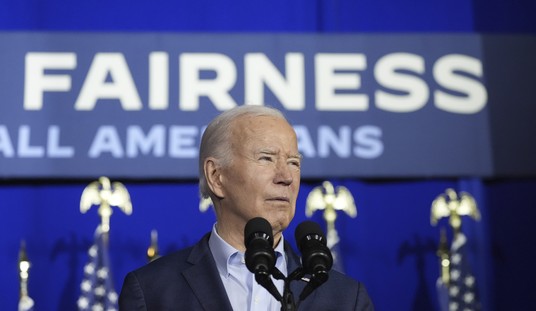
The Woman in Black
I believe it was Big Hollywood’s John Nolte — the Hulk of the culture wars (lovable until angered) — who first pointed out that Hollywood could revitalize its failing self by learning some lessons from the National Football League. I mentioned his column in a blog here and recently taped a discussion on the topic with my PJTV pal Bill Whittle.
But while I acknowledge that everything Nolte says is true because otherwise he might turn into an enormous green giant and crush me, I also think there are certain ways in which Hollywood simply can’t compete with the NFL – and shouldn’t. Art is art and sports are sports, in other words. For me, this was driven home last week like a stake through a vampire’s heart when I compared the Super Bowl (LXVCDL whatever) with the movie The Woman in Black.
Careful students of this blog will know what a crazed fan of ghost stories I am and Woman in Black is one of my favorites. (I’m also a big fan of The Woman in White so clearly when it comes to women’s fashions, I’m easy to please.) I first saw WIB as a two-handed play in London (one of the longest running plays in the West End, I believe). I was riveted and terrified. At the intermission, I stood up. The lady behind me had her foot on the back of my seat and when it folded up on her toes, she let out a loud scream. I was already so tense that they had to bring in a cherry picker to pry my head out of the ceiling plaster.
I wasn’t all that thrilled with the Susan Hill novel the play was based on, but I loved the 1989 Granada Television adaptation. The new film, however, starring Daniel Radcliffe, is just awful. All the subtlety gone, the characters uninteresting. One big startle after another with a prettified ending that was gag inducing. My guess — and it’s just a guess — is that none of this was the fault of the creative team, but that the various suits involved worried that modern audiences wouldn’t tolerate subtlety and tragic implications and so forced the movie makers’ hands. Again, just a guess, but that’s what it smelled like to me.
And here’s the thing — financially, the strategy was right: it worked. The film came in a close second at the weekend box office, earning around 20-million dollars, and got decent enough reviews (64% critical, 69% popular on Rotten Tomatoes). It seems to have been a hit – a single maybe, but a hit nonetheless.
The Super Bowl also worked — big time — scoring the biggest audience of any US telecast ever, garnering somewhere around 111 million viewers.
But here, once again, is the thing. The Super Bowl worked because it was good: a thrilling back-and-forth rematch between the juggernaut Patriots and upstart Giants, and the conclusion to a season of delights and excitement. The Woman in Black worked because it pandered to teens and had a good advertising campaign. The Super Bowl will be remembered by sports fans for a long time. The Woman in Black will be forgotten before I even finish writing… what was I talking about?
And the truth is, all sports events that work work because they’re good and are also good because they work. Experts may say, oh, no one truly appreciated this great game or that, or such and such a player wasn’t fully recognized because he played in a small market instead of a big one, but basically every one knows a really great game or player when they see one and if they can see one, they will.
With art, it just ain’t so. If you had been alive during the greatest season of English poetry—alive with Wordsworth, Coleridge, Blake, Keats, Shelley and Byron—even if you were a literate, intelligent person, you might only have been aware of Byron. Blake labored in utter obscurity, Keats died before anyone really knew he was there, Shelley pretty much likewise, Coleridge wasted a lot of time on opium, and Wordsworth lived through a lifetime of the worst reviews any great writer has ever had before getting a small portion of the love he deserved.
Some people will tell you that quality in art is all a matter of taste but they’re wrong. Shakespeare is better than Ian Fleming, whether audiences think so or not. And yet the recognition of greatness in art is capricious. Some great art is for intellectuals and goes over the head of the common man, some great art is for the common man and is dismissed by intellectuals out of snobbery, some great art is lost to view by chance or personal foibles (crazy Van Gogh only ever managed to sell one painting in his lifetime, kooky Kafka left most of his work unfinished and unpublished), and some great art comes out before its time and critics and audiences alike just simply don’t get it for years and years. Conversely, a lot of art that becomes hugely famous and well-reviewed just stinks. In fact, going back in history, many of the most famous and appreciated artists working in any given generation are terrible and soon justly forgotten. They managed to amuse the people or mesmerize the critics, but they weren’t really any good.
Leftism, political correctness, foreign markets and bad business are removing Hollywood movies from the mainstream of American culture they once dominated. Imitating the NFL’s respect for its audience would be a good place for movies to start to find a way back. But American movies were also once great art. And the journey back to that greatness is far more complicated than throwing a football.








Join the conversation as a VIP Member